
02 Mar Through Wild Rock
ONCE UPON A TIME, a foggy, atmospheric morning that Thomas Quinn pegs to be about 15 years ago, he and American stone carver Tony Angell left Seattle bound for the shadowy interior of a rainforest.
In the middle of the Pacific Northwest, they arrived at a grass-covered clearing, clustered with cars and pickups. The scene had the ready appearance, Quinn says, of a clandestine cult gathering.
People were huddled around various jumbles of beautiful rocks, some so large they needed mechanical hoisting. Angell and Quinn, a celebrated nature painter, walked the perimeter surveying the lively human interactions. “It was like we were in a holy place and, to my amazement, they all knew Tony,” Quinn explains. “Being the hulking figure he is, he was treated as a kind of high priest, bestowed with the respect almost of a deity.”
Quinn had witnessed the admiration Angell attracts at fine art events and museums, but not like this. Although Angell is indeed an imposing man physically — hints of his earlier life — he commands enduring stature for something else.
Unspoken at the informal “rock swap meet” in the woods was the knowledge that what Angell has achieved via chisel on some of the hardest, most unforgiving and remarkable rocks on earth — a body of work amassed over many decades — sets him apart. There is recognition that what he does as a wildlife artist is magical.
In some circles, direct stone carving is regarded as artisan folkcraft. It’s a form, however, as exquisitely refined as the masterpiece of Michelangelo’s David, the Modernist statements of Constantin Brâncusi, and as prolific and ancient as the talismanic traditions practiced by indigenous peoples around the world. While Angell does cast pieces in bronze from clay, it is the raw, organic quality of rock, especially stones found rough and wild, that gives him deepest spiritual meaning. Others have taken notice of his corpus.
Nearly 35 years ago, Dorothy C. Miller, then a curator at the Museum of Modern Art in New York City, noted the place-based Regionalism flourishing in Seattle was driven by artists responding to the natural world. “Seattle had a flavor all its own,” she said.
That trend, emerging a generation ago, has become a tidal wave, and today Angell is one of its contemporary standard bearers for naturalistic interpretive Realism.
In the summer of 2014, Angell’s work was featured at the Seattle Art Museum in a heralded exhibition titled Mystical. Prestigiously, he was among 10 other artists including the late Morris Graves, George Tsutakawa, Guy Anderson, Kenneth Callahan, Leo Kenney, Mark Tobey and James Washington. Angell, Paul Horiuchi and Philip McCracken were the only living artists selected at an institution that is considered the West Coast’s version of MOMA.
For any visual artist, the eternal trial involves overcoming barriers that medium itself creates between viewer and imagery. With carving and sculpture, rigidity of gesture and hard surface can have a cool, distancing effect. But with Angell’s pieces, the power of revelation draws us nearer, trancelike, into the curvatures and planes of his designs. The eye swoons first to their shimmering tactility, followed by the sensuous reward that accompanies contact with fingertips. Angell’s animals — he is known for his explorations of birds, especially corvids and owls, fish and sea creatures — are allegorical symbols, not documentarian.
“Finding one’s own voice, one’s own authenticity, is perhaps the highest goal an artist seeks,” says George Carlson, the lauded American artist and the only person in history to win the Prix de West Invitational prize first as a sculptor and then as a painter. “In my estimation, Tony Angell has achieved this through his observation skills of nuances in the natural world and transformed them into shapes and forms removed of all excess, leaving a form in pure, silent power.”
There are stories, legendary tales, all true, of Angell heaving small distinctive boulders, tumbled and polished by currents, out of bone-chilling riverbeds in waist-deep water; lugging his finds out of the rugged mountains on the back of shoulders; and vigilantly attending, as he did with Quinn, stone trading conventions in the boreal boondocks.
Angell does not hunt for rocks with presumptions in mind. The first step is identifying a mass with personality, heeding his own intuition, and then tuning up his receptivity to hear a native narrative, to summon animal figures out of his igneous, sedimentary or metamorphic muses, as he uncovers and responds directly to glorious emerging patterns.
Transforming seemingly impenetrable surfaces into hypnotic objects is part of the paradox. Even in his seventies, he has not slowed down. “I continue to be attracted to the resistance of stone. Perhaps it’s still my ego that needs to be satisfied — you know, doing something with something that initially defies you — finding its core form and bringing it forward, liberating it.” Angell says. “The method hasn’t changed fundamentally since the Pleistocene. Find something harder than what you’re carving and chop, chip, grind and abrade away until your vision is realized. In this techno-crazed, detached and virtual reality society, it’s exciting for me to sustain that link with my past.”
In many ways, Angell is analogous to the earthly materials he hews, aspects that turn far more intriguing when their interiors are excavated.
Born in 1940, Angell falls under that meaningless artistic description of having been “self-taught.” The son of an FBI agent father who later became a private eye working in Hollywood and an artist mother who nurtured in Tony his instincts for interpreting nature through art, Angell grew up in the San Fernando Valley when it was still rural and teemed with wildlife.
A big-boned, broad-shouldered lad, he demonstrated prowess on the football gridiron, but excelled in track-and-field weight events. His ability to heave a shot put won him a scholarship to the University of Washington, where he also was a decorated discus thrower. During his early 20s, Angell earned distinction for something else: He won competitions as a power weightlifter and was crowned top arm-wrestler of the Pacific Northwest in 1964. rugged mountains on the back of shoulders; and vigilantly attending, as he did with Quinn, stone trading conventions in the boreal boondocks.
Along the way, he taught speech, psychology and English at a Seattle high school and landed a job helping to create the nascent environmental education curriculum for public school classrooms through Washington State. During his forays in nature, he used birding field guides illustrated by Louis Agassiz Fuertes, Francis Lee Jaques and Don Richard Eckelberry, the latter becoming a father figure.
Angell recalls coveting the Life magazine issue featuring interior and landscape paintings by painter Andrew Wyeth. Later, he says, came exposure to the cave painters of Altamira and Lascaux, the carvings and screens produced by artisans during the Japanese Edo period (1603–1868), and the works of celebrated fine artists who made nature the centerpiece of their work: the late Bob Kuhn, Bruno Liljefors, Rembrandt Bugatti, Benvenuto Cellini and Antonio Canova. Close to home he relished his contact with the works of living and deceased native wood carvers (particularly North Pacific Inuit, such as Melvin Olana, Eskimo and Aleut) and the bird art of Canadian James Fenwick Lansdowne.
“My work is stylistically very different, but there’s a kinship. I think we both feel similarly toward our subjects,” Angell says. “I occasionally wonder over what recent ancestors I might have hadthatprovidedthegeneticmemory to carve. My Irish grandfather, my mother’s father, was a stonemason and builder of silos in rural Michigan and later made elaborate inlaid furniture from the hardwoods surrounding their home. I think there is a spiritual link of hands with those carvers and sculptors farther back in time.”
In rural Michigan and later made elaborate inlaid furniture from the hardwoods surrounding their home. I think there is a spiritual link of hands with those carvers and sculptors farther back in time.”
Angell also is a gifted wordsmith influenced by poet Ted Roethke and his longtime friendship with award-winning novelist Ivan Doig. In 2009, Angell wrote and illustrated a book, Puget Sound Through An Artist’s Eye, that is nothing less than an artistic paean to his home. “To encounter Tony and the plenteous generation of sculptures that have come to cold yet fiery life is literally to see a world in the making,” Doig remarked in the foreword. “Angell has bestowed on us across the past four decades an orb of double importance. An everlasting sense of the Puget Sound country that is nature’s blessedly varied kingdom, and within that a brilliantly preserved wingdom.”
This spring, Yale University Press is publishing The House of Owls, which Angell penned and illustrated — a project he praises his wife and soul mate, Lee Rolfe, for editing — following other natural history collaborations with ornithologist and wildlife researcher, John Marzluff, on the behavior of ravens and crows.
Why does Angell put a premium on environmental literacy in society and the role that art can play in raising awareness? His insight is informed by personal experience, his concern elevated by what he has witnessed in terms of ecological destruction. He is not, however, an activist trying to shock viewers.
“I can’t imagine any artist who responds to nature being indifferent to the accelerated degradation of our natural heritage worldwide,” Angell says. “While it was not the origins of my artistic expression, perhaps today my art is an escape from the grief I feel at seeing the wild community around my home diminished by the greed of our species. In working on a drawing or a piece of stone, it is a conversation between myself and my subject. We converse, and while it tells me of its form, attitude and habits, I imagine it sharing some of the needs we have in common. Public pieces of mine, in particular, provide me with the delight in knowing that someone has found pleasure in the company of my sculpture.”
No one understands that more than Swedish-American sculptor Kent Ullberg, who has more than 100 wildlife related monuments adorning public spaces on four continents. “Tony has his own language, articulated through his very personal stylized interpretation of nature. He isn’t just communicating knowledge. He is exuding love for wildness, believing that when people let it into their hearts, that’s how social transformation can happen,” Ullberg says, noting that an Angell carving of a snowy owl in marble sits on his fireplace mantel.
Angell’s delicate carved pieces are coveted, some assuming life over years of creative evolution and contemplation. His galleries, including Gerald Peters in Santa Fe and Foster White in Seattle, implore him to deliver more. Owed only to limitations of time and available materials, Angell’s large monuments are even rarer. He recently completed two such pieces for the Seattle Aquarium.
In direct carving, one maxim is that the harder the rock, the more daunting the challenge. It’s one thing to pull out a pocketknife and carve a figurine out of cheap, soft soapstone; it’s another when tensile, diamond-headed chisels are required just to penetrate the surface.
Angell in personal philosophy could almost be considered the arch-Jeff Koons. His creations standing as a bold demonstration of how art trumps artifice; how those who embrace humility are more powerful than those who crave attention — that the rock of ages is more true and eternal than throwaway plastic.
“The appeal for me of interpreting animals in nature has never diminished,” Angell says. “I think initially I was eager to respond to almost all of what I witnessed and in recent years I’ve come to accept the fact that my path has been and will continue to be to go farther into my subject rather than going out to more subjects. In other words, I see a raven, for example, as an infinite source of possibilities. There’s greater satisfaction now in finding that I’m getting closer to what I consider the ‘truth’ of my subject rather than just its appearance.”
Besides having his work in the permanent collections of corporations, private individuals, schools, libraries, zoos, hospitals and museums, including the National Museum of Wildlife Art and Frye Art Museum, Angell’s pieces adorn a variety of other public spaces. For instance, there’s a pair of massive ravens, in bronze, for the Sleeping Lady Conference Center in Leavenworth, Washington, and at the entrance to the Mt. Baker Recreation Area in the North Cascades.
“Tony’s powerful presence is manifested in his sculpture. His ravens and crows reflect years of direct observation coupled with keen insight, enabling him to coax nuances out of stone and bronze that otherwise would be unimaginable,” says Kathy Kelsey Foley, director of the Leigh Yawkey Woodson Art Museum in Wausau, Wisconsin, an institution that has several major pieces in its collection.
Foley recalls a Saturday morning — the date was September 8, 2001 — when Angell was delivering a moving lecture about the creative forces of resistance and momentum before a packed auditorium of several hundred people. “As he concluded, he uttered the following phrase, which came to be more meaningful than anyone in attendance could have imagined,” Foley explains. “He said, ‘When words fail, art prevails.’ Our world irreparably changed just three days later. Tony’s prescient and poignant words loomed large then and still do today. Angell — the man, his sculpture and his writing — is one of a kind.”
Quinn gets choked up saying that when it comes to being honest, his friend has never compromised or pandered to convenience or fashion or sold his soul to make money or left the bottom of a stone unappreciated. It was Quinn whom Angell asked in 2001 to give opening remarks when Angell was inducted as a Master Artist at the Woodson Art Museum.
Admiring of Angell is the Swedish painter Lars Jonsson, a fellow naturalist considered one of the foremost avian artists in the world and, along with Quinn, Ullberg, Eckelberry, Lansdowne and a few others, a hallowed member of the Woodson’s Master Artist pantheon.
“Tony is a wonderful sculptor, with a great feeling for form. He has a rare combination of ultimate power and, at the same time, a sensibility in his details,” Jonsson says. “I am drawn to his works because they always have something mysterious about them. I never get the feeling that he’s attempting to show off or be self-indulgent. His efforts are, rather, an honest try to read the character of the stone, engage in a dance with its inner power, and do it with the craftsmanship of an old Greek master.”
With the arrival of Angell’s new illustrated book from Yale, I asked Angell what parallels exist between his carving and writing — if one affects the other. “I don’t know if there is any relationship other than when I try to explain what I ‘feel’ in a piece of work by putting it into words, I feel that I fall short of success. Art transcends words. I don’t think in words, but rather through images, feelings and emotions and I can feel the action in my head. The question ‘What are you working on?’ is always difficult to answer. Although the forms I’m working on may take the form of a falcon, an otter or water snake, the way I see the pieces in my mind is imagined very differently; it has no written vocabulary. An animal is an expression of an emotion, more likely connected to archetypes reflecting the human relationship with nature in our time.”
Not long ago, Angell paid a visit to see Ghiberti’s Gates of Paradise at the Seattle Art Museum and was intrigued to see it in the flesh — in metal — after eyeing it only in art books. “That kind of classic work is not nearly as attractive to me as going into the country and witnessing something in nature that gets my mind thinking what I might do to pay it tribute. I’m not suggesting there isn’t something I could learn from the Renaissance masters, I just think that in the time I have left to me I need to just wring out the remaining moments I want to commemorate in stone. Nature is a grail and wellspring I can go to with some regularity — in her most evocative, provocative and inspired state.”
For him materials that quite literally can be described as “old as earth” connote a cosmic pro fundity. “The other day a friend called me from the Southwest. He and I prowled the North Cascades looking for carving stone in the rivers and road cuts in the l960s and ’70s. He’s been ill recently and may be facing his own mortality, so he’s interested in the pondering notion of permanence.”
“Do our kids know our stories?” he asked Angell. “We need to tell them so they’ll know.”
“So I ask myself,” Angell reflects. “What’s left if there are no stories to tell? I’m fortunate. My stone stories will remain, and for some time there will be a remnant of what I was and what I felt to be sacred. That its voice is telling us of the million-year-old carver that fashioned it is pleasant to think about. In that way our voice is one.”
What are we to make of the legacy of this living giant? When words fail, art prevails.
- “Tundra Swan” Alabaster with Black Slate Inlay 10 x 28 x 14 inches | 1981
- “Emissaries” Bronze | 7 x 7 x 5 feet | 2006
- “Wind Hover” Bronze | 14 x 10.25 x 6.5 inches | 2011
- “Grooming Otter” Belgium Black Marble 10 x 10 x 15 inches | 1999 |
- “Sea Form” Marble | 5 x 28 x 30 inches 1993 |
- “In Pursuit” Bronze | 45 x 27 x 13.5 inches | 2013
- “Murrelets” Bronze | 12 x 11 x 7 inches | 2013
- “Gyrfalcons” Carrara Marble | 38 x 18 x 10 inches | 1999 |
- “Racing Seabirds” | Portoro Marble | 15 x 30 x 12 inches | 1982 Private Collection





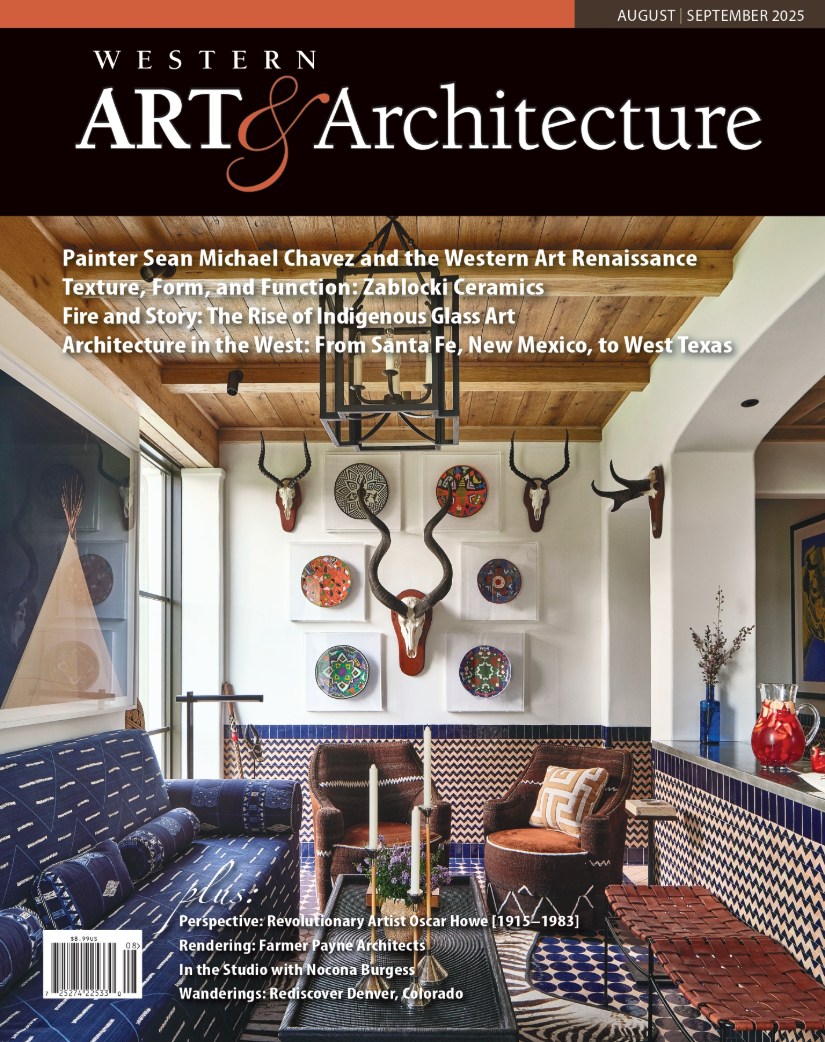

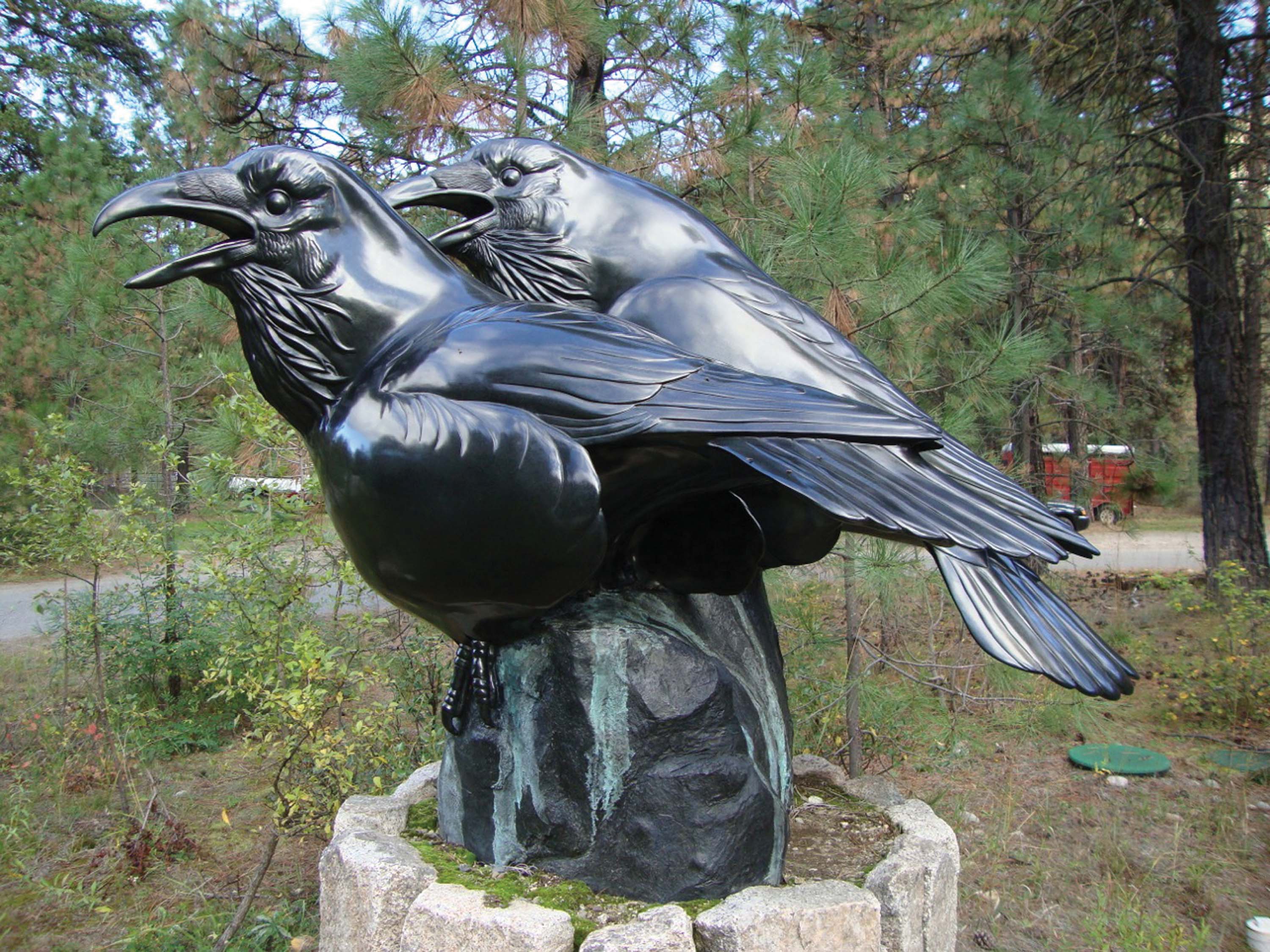
.jpg)
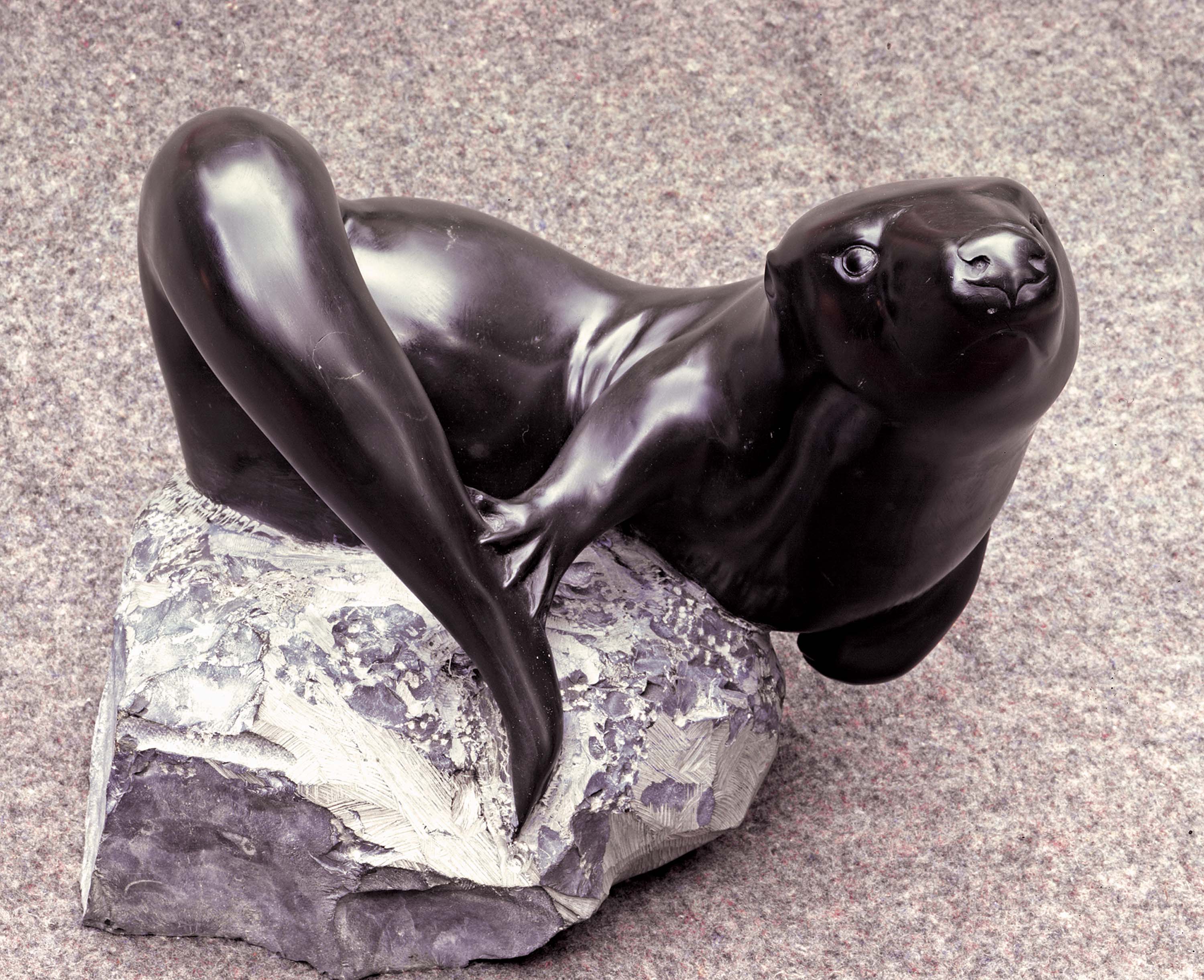
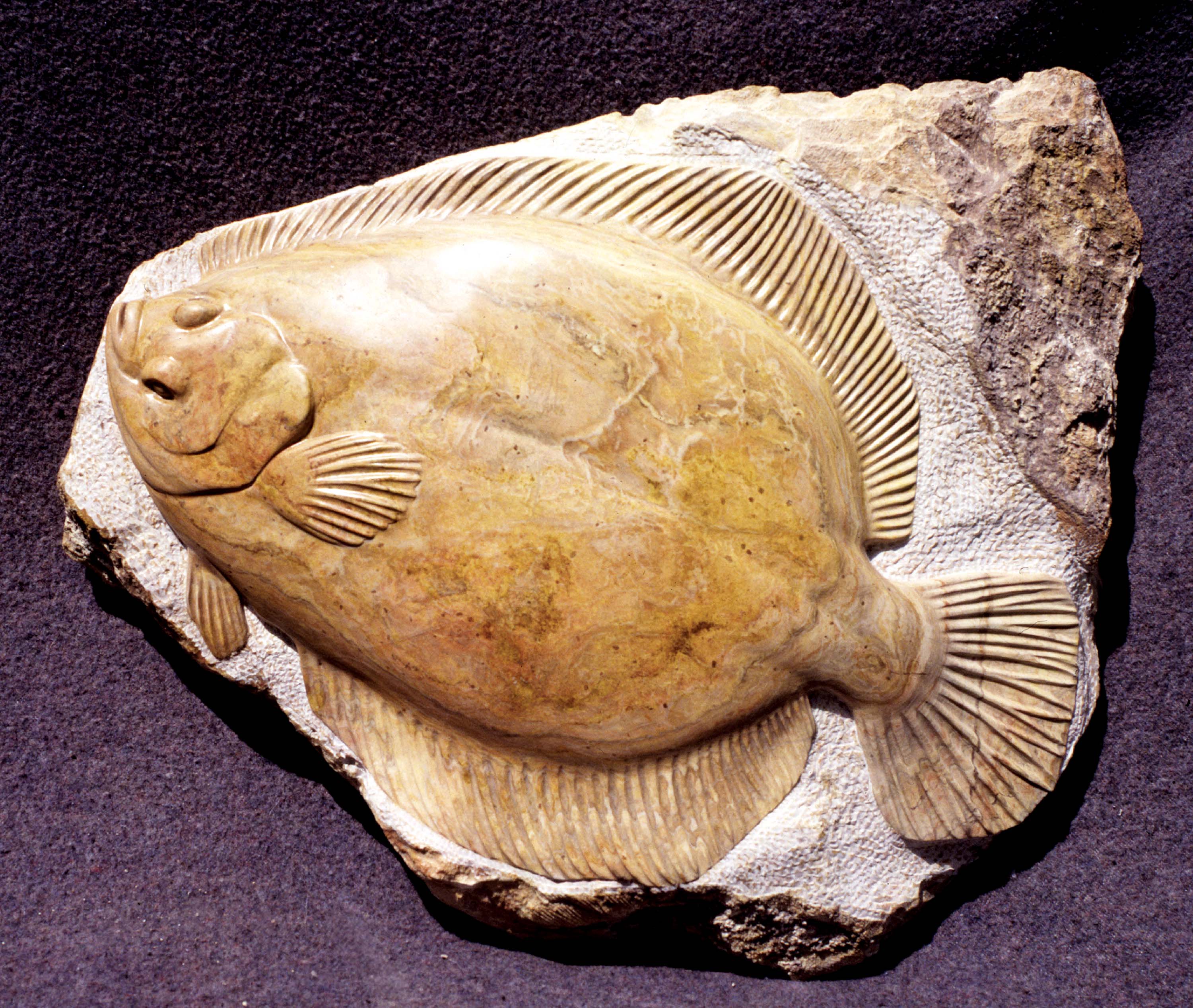

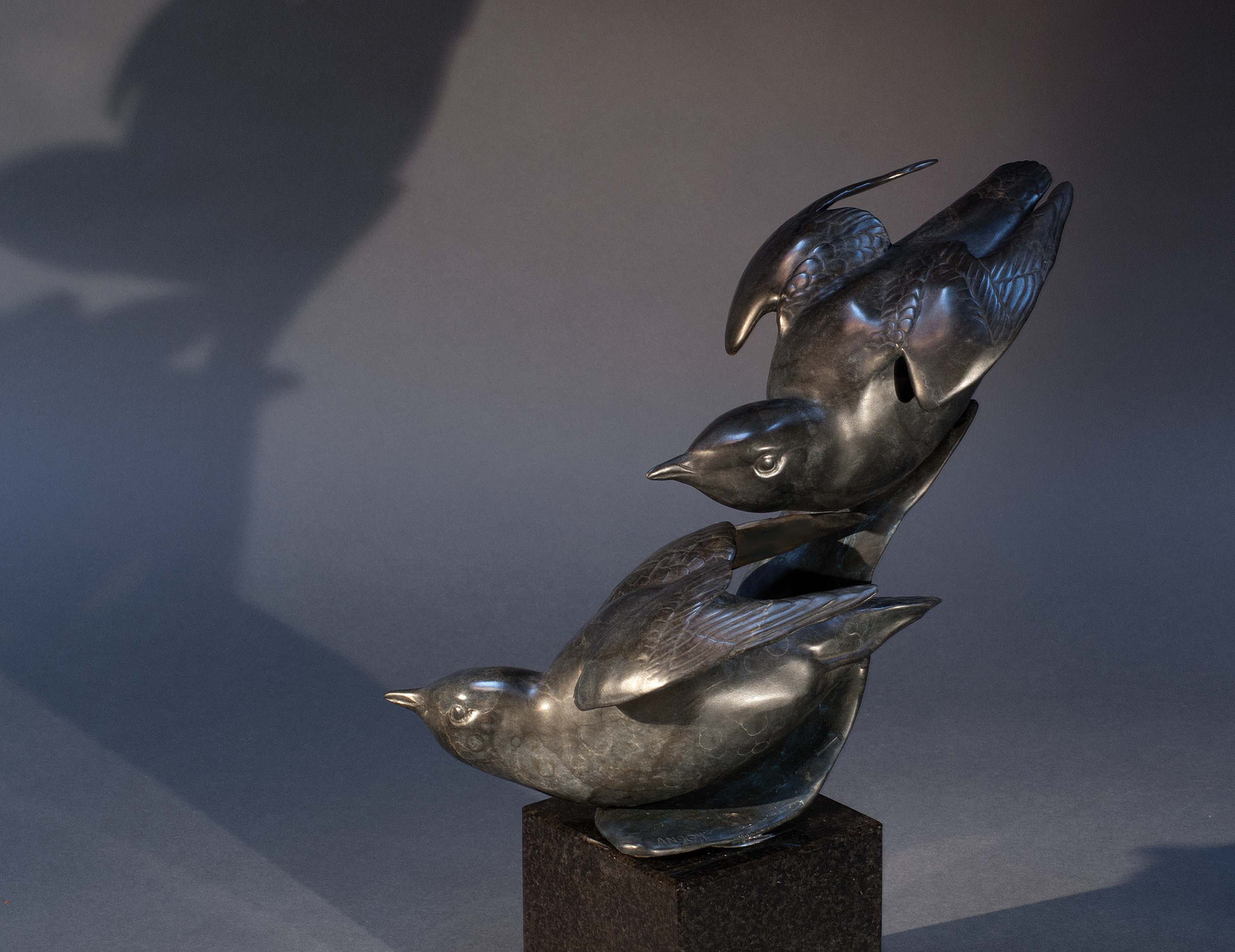
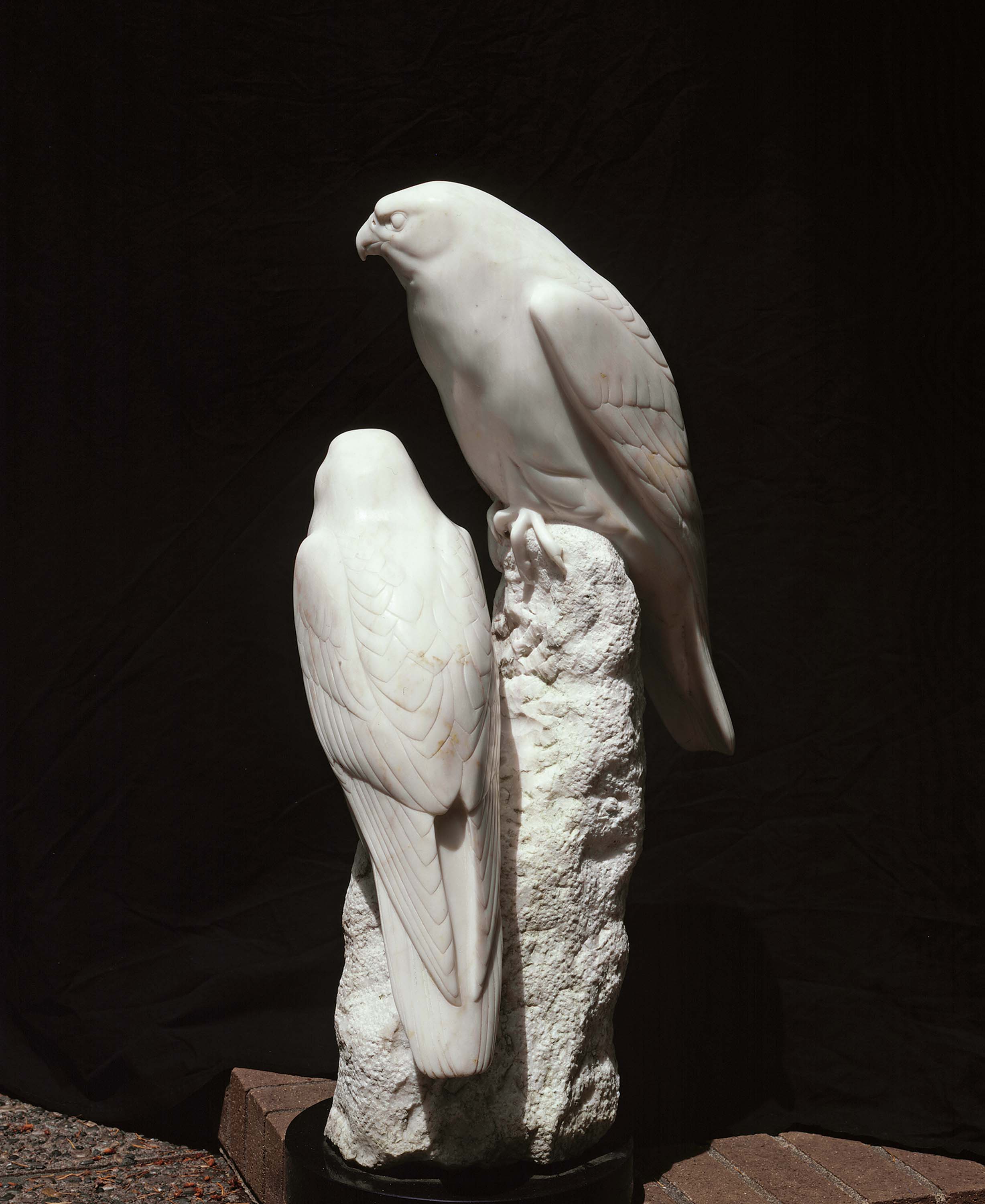
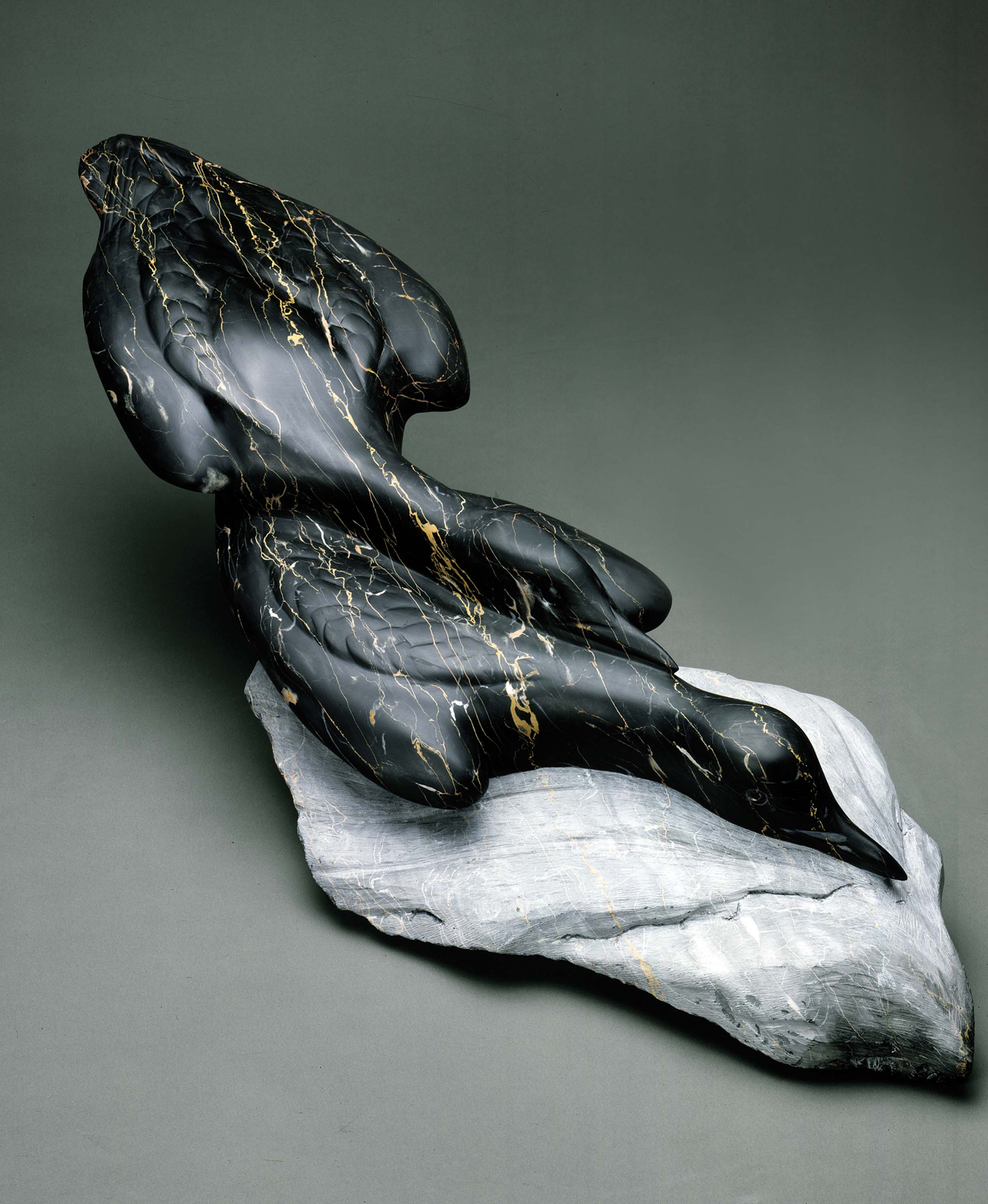
No Comments